I Went Alien Hunting on Chile’s Mountainous ‘UFO Route’
Snow seeped into the bottom of my hiking boots on an unseasonably chilly November day, standing atop a cliff within the sprawling Chilean Andes mountain range, squinting my eyes, as if that would bring the aliens to me.
“The most popular legend is that this plateau is a UFO landing strip,” said Peyo Orellana, the co-owner of “holistic tourism” service Peumayen Vilches, after a five hour hike to the summit, known as the Enladrillado. “Because there are always sightings actually, that come from west to east, towards the volcano.”
The Enladrillado cliff looks out on the dormant Quizapú volcano and is one of several spots along Chile’s “Ruta Ufológica”, or UFO Route. The route is made up of supposed UFO hot zones promoted by residents and the local government as a journey for extraterrestrial-curious tourists to take.
“I feel that there is a lot of energy here. Maybe it is a point close to the volcanoes where there is energy and it could be that the UFOs are searching for energy and a place, a plateau in front of these volcanoes, close,” said Orellana. “This plateau is very unusual.”
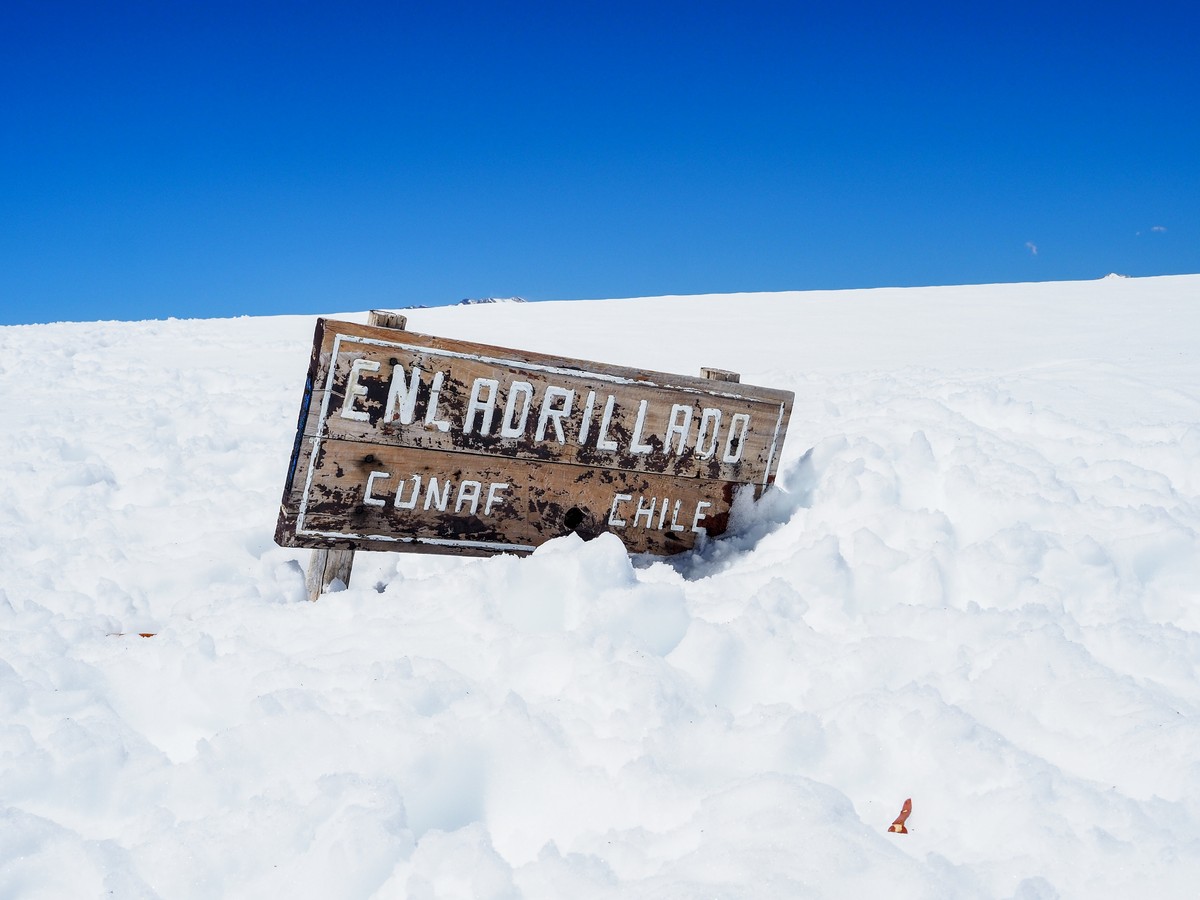
The Enladrillado is a five hour hike to the summit and is a rock formation that locals believe serves as a landing strip for spaceships. Image: author
Standing on top of the Enladrillado, I thought that if there was ever a time to hope some sort of alien life would appear, it was now. The dialogue around whether or not aliens exist and are visiting Earth is seemingly ever-present since U.S. congressional hearings on UFOs in 2022 and 2023, and even supposed extraterrestrial corpses being presented in front of the Mexican congress in September. In South America, Chile is considered by Ufologists as one of the countries with the most frequent unexplainable sightings, and in 1997, the Chilean government even famously created an Air Force-run institution to track “anomalous aerial phenomena,” one of the first countries in the world to publicly do so. The U.S. only openly created a similar government entity in 2020.
Now, in what is perhaps a microcosm of the global UFO craze, one part of the country is trying to commercialize the trend, and promote itself as the top destination for people who want to meet potential otherworldly neighbors.
The Ruta Ufológica first began in 2007 as a way to attract people “searching for new experiences,” said Gamaliel Santander, one of the founders of the route, because “people here in the area have come across sightings, lights, objects that have no explanation.”
Initially it was supported through a program with Chile’s national tourism institute (SENATUR for its Spanish acronym) and the San Clemente municipal government. But the route existed largely as an afterthought with no budget or oversight, promoted by a couple websites and a few locals in the region who believed in the local lore, and fizzled out over the past decade. In July, however, the local government announced an effort to revive the Ruta Ufológica by creating tourist maps and explanatory signs at different locations, hosting workshops with local business owners, and attempting to facilitate a local industry of guides. There’s not much in the way of souvenirs, but that is surely coming. Throughout the trip, I was offered prototypes of various sorts of tourist knick-knacks, everything from stickers, key-chains, and backpacks, being promoted by Santander and the local tourism authority.
Santander hoped the route would last this time, especially now that belief in alien life is at the forefront of mainstream international conversations. Although he knows that government priorities change, and “maybe next year it will be horseback riding or some kind of sport, but for now it is ufology.”
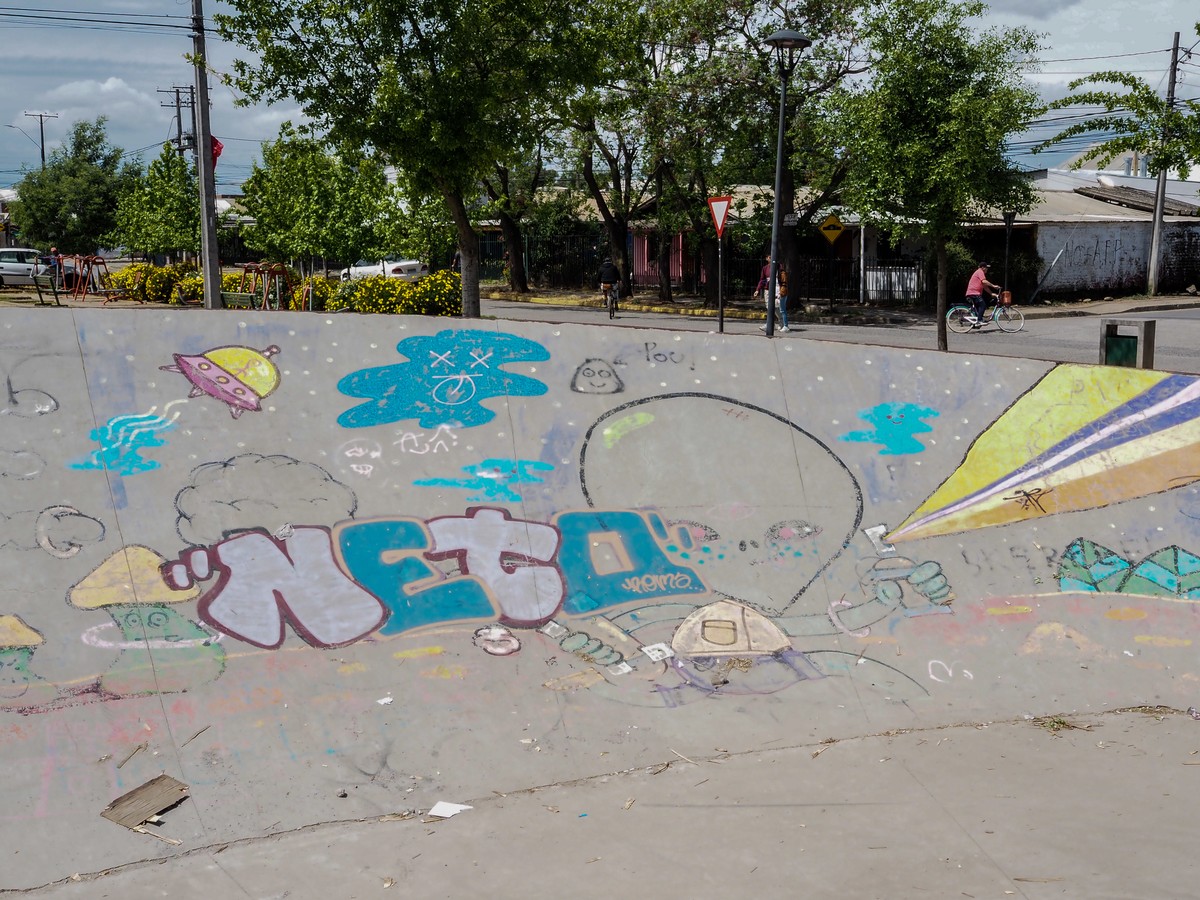
Alien and UFO imagery adorn a skatepark in San Clemente town. Image: author
I believe in a healthy dose of skepticism, but when it comes to the idea of life existing on other planets, I’ve always been wildly optimistic. That being said, I’ve never had a sighting, abduction, or frankly any concrete reason to believe. When I arrived on the so-called UFO Route, I didn’t expect my optimism to diminish. I worried instead that my scepticism towards people, laser-targeting the wallets of X-Files fans, would grow.
There’s little in the Vilches township of the San Clemente municipality besides nature, a couple small stores, and a single restaurant hidden down a dirt road. The crisp air, pine trees, and mountainous terrain is reminiscent of rural areas in Colorado or Switzerland. Most tourists come just to isolate themselves in nature and go hiking, but for those in the tourism industry embracing the Ruta Ufológica, they say it’s for good reason.
Locals have long whispered about baffling experiences in Vilches, recalled the husband and wife owners of a cabin business called Los Troncos.
“Every local here at first is going to say, ‘No, I haven’t seen anything.’ No one wants to look crazy,” said Maria Isabel Bravo, 56. “But after a while you start talking.”
“Everyone has a story,” she added.
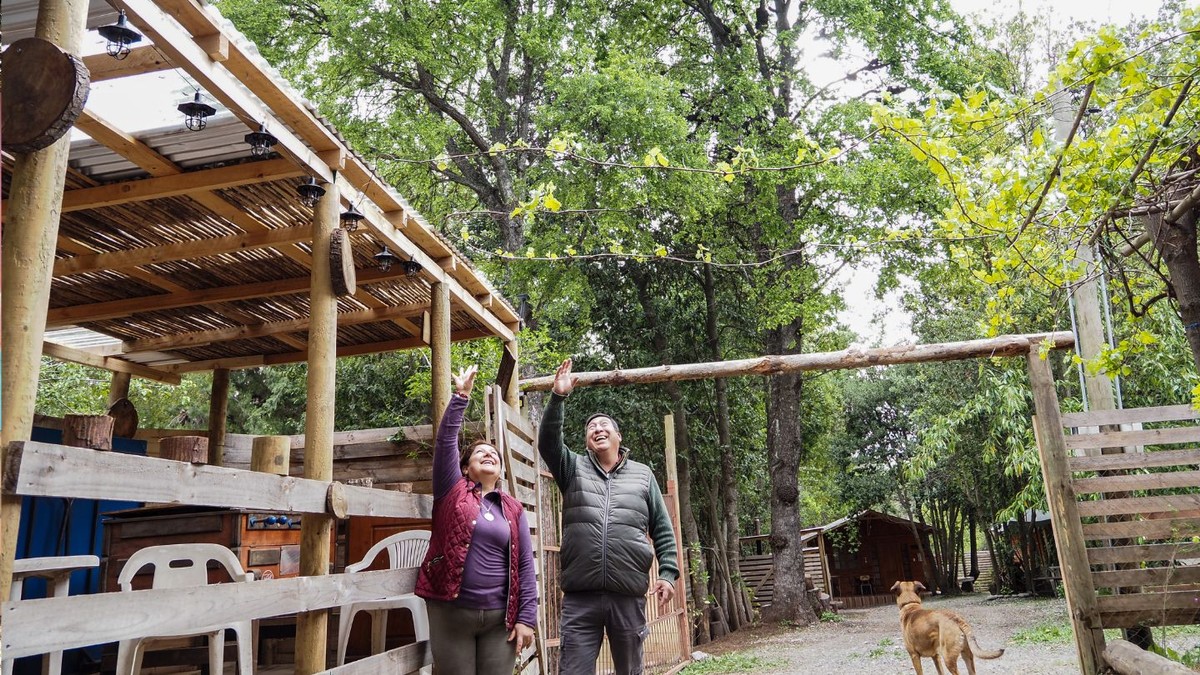
The owners of Troncos Cabañas point to the sky, where they claim to have once seen something mysterious. Image: author
For Maria and her husband, Marcelo, it was years ago when they were enjoying an evening under the stars in the tinaja, a traditional wood-fire outdoor hot tub, when they saw a “giant light,” she said.
“It caught our attention that everything was illuminated,” Marcelo remembered. “But it stopped, and suddenly, it picked up speed, and, zoom, like lightning,” it was gone, he said, gesturing with his hands.
A few miles away, Clara Contreras, a 72-year-old retired environmentalist and risk analyst, sat on her back deck and recalled once in the mid-2000s seeing an object shaped like a “giant cigar.” It hoveried next to the mountain range that overlooked her home in Vilches just south of the Altos de Lircay national park where the Enladrillado is located, before flying away vertically, she said.
But that was nothing compared to her first encounter around a decade earlier, she said, when she went to pick up a traditional Chilean torta to bring to a Santa Elena festivity being hosted by a friend. She said she was waiting on the side of the road for a bus with three other people, including a local park ranger, “when suddenly we saw that the trees were bending and there was not even a breath of wind, nothing.” Something appeared in the sky that looked like a “giant donut” that was “the size of a stadium” with purple and yellow lights. After a few minutes or so, it left, and “when that thing had passed, the trees began to relax again and returned to their position,” she said.
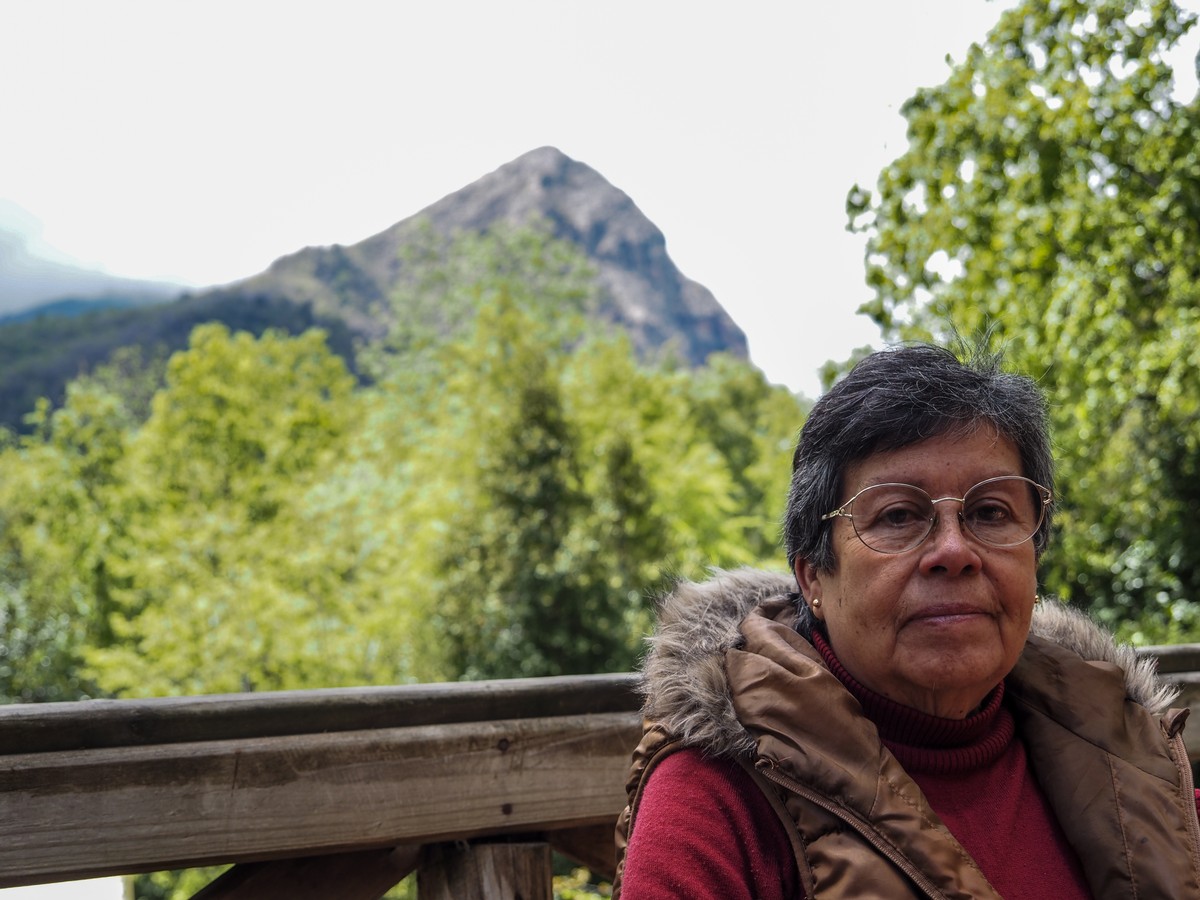
Clara Contreras once saw an object shaped like a “giant cigar” floating next to the mountain behind her. Image: author
A short walk from the area’s Lake Colbún, one of the other primary attractions of the UFO Route, Beatriz Vega sat on a rickety bench under a tree. She doesn’t work in tourism or local ecology, and doesn’t benefit financially from her experiences. Her husband gets annoyed when she talks about what she’s seen over the years, she said.
The first time, a strange flying object that was lit like the moon but kept getting bigger followed her down the nearby road in the early 80s, which she claimed was also witnessed by neighbors. Over the years she’s claimed to have seen other weird things in the sky, including (a bit conveniently, I thought) the night before I arrived.
She saw an odd star that “moved one way, it moved another and the light changed, between yellow and red. And I know that’s not normal because a star doesn’t do that.” After 10 minutes, it quickly “disappeared, just like in a second, very quickly,” she said.
Motherboard could not corroborate any of the claims made by those interviewed.
Experiences like those reported by residents in San Clemente are somewhat common in other parts of Chile too, said Rodrigo Fuenzalida, the director of the Chilean Ufological Research Group (AION for its Spanish acronym). Fuenzalida appears regularly on both local and international television discussing extraterrestrial phenomena.
Relaxing in his office chair in the capital of Santiago, Fuenzalida listed off alleged unexplainable celestial experiences in Chilean history, from Indigenous lore to the writings of Spanish colonizers in the region in the 16th century, and in the years following, stretching from Chile’s northern Atacama Desert desert to the isolated southern tips neighboring Antarctica. He referenced a rumored—but unproven—incident in 1914 in another part of the Maule province where San Clemente is located, regarding a fallen spacecraft. “Before Roswell, we had a crashed UFO,” said Fuenzalida
Chile is ripe for alien visitors, in his opinion, especially in areas with a historically low human population like San Clemente because “the territory has a lot of fresh water, a lot of minerals and places where you can move and there will never be someone living there. Therefore, something can be installed there, because centuries will pass, they will never be discovered.”
In October, Fuenzalida visited the San Clemente region as he has numerous times in the past, but this time to lead a workshop about “concepts of ufology” for local business owners interested in the burgeoning UFO Route.
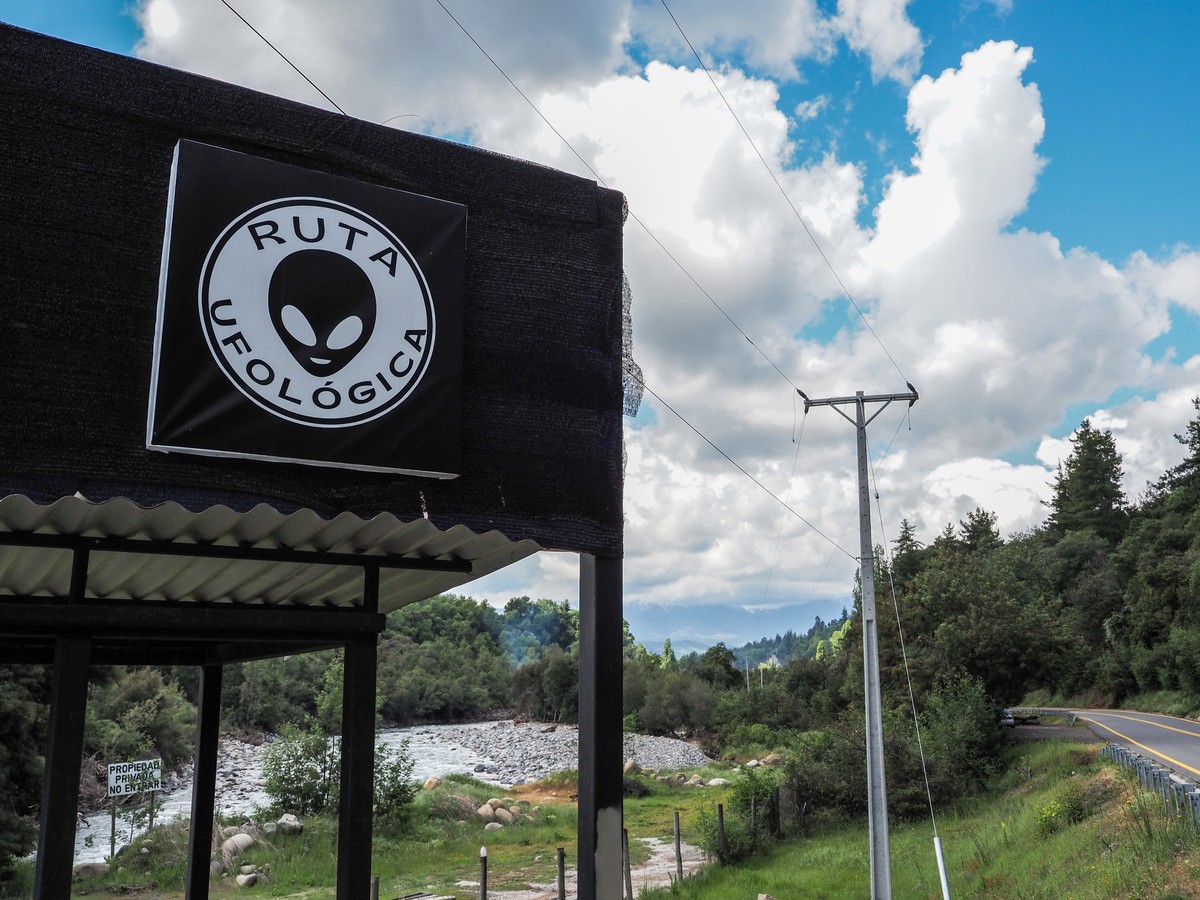
The Ruta Ufológica is being revived in 2023 in San Clemente, Chile. Image: author
He hoped the second chance for the Ruta Ufológica would be better than the first, because the previous attempts had a “good dynamic, but it lacked a lot of management, entrepreneurial spirit.”
“Today things changed because I noticed that everyone is super well aligned. They had a work plan, to place the milestones (on signs) along the route, etc., they are all very focused,” said Fuenzalida.
But his other hope is that the increased interest by regional authorities will allow investigators to strategically monitor UFO activity by camera in certain areas, and an in-depth survey of residents’ experiences.
To find out more about how government figures see the UFO route, I met with San Clemente Mayor María Inés Sepúlveda Fuentes next to Lake Colbún. “We have magic in our mountain range,” said Fuentes, as the glacier tips reflected in its turquoise water.
Some locals believe that UFOs travel in and out of the lake, where an underground base exists. It’s one of numerous rumors that exist in the region, similar to others from elsewhere within Chile and in many areas of the world.
The mayor said she didn’t really know if aliens existed. She admitted that although she’s never had a personal experience or sightings herself, “I keep looking at the sky because at some point, it’s going to be my turn too.”
Okay, but does the government have any information on alien lifeforms? I asked. It’s funding the UFO Route, after all.
“We will never know that,” she said.
Who knows, maybe the route is actually some sort of an interdimensional plot, or a deep-state funded conspiracy to send unwitting backpackers into the hover ramps of spaceships. But I doubted the mayor would tell me, even if she knew.
I took Mayor Sepúlveda Fuentes’ advice and tried to test my luck with the sky. During the day time, slightly discolored clouds looked like flying saucers, birds glanced from the corner of my eye sparked sudden double takes and short-lived possibilities, while the chem-trails of the occasional plane further stoked a conspiratorial spirit.
I asked Juan Claudio Cerro, a longtime member of the municipal San Clemente Tourism office who is heading the reinvigorated effort, what he would say to someone who believed the UFO route was nothing more than a way to attract tourists, rather than an actual phenomena.
Cerro called the UFO Route “special interest tourism, which will only bring people who like the subject, people who come to investigate.”
“We can’t guarantee that you will have a sighting, but you will have a beautiful experience with nature,” he said. “This encounter with clear skies, this encounter with hiking, with trees, with forests and within that you may see something supernatural.”
The response of the region to the UFO tourism movement is limited, said Cristian Rojas, a community tourism representative. It’s mostly pushed by the eager business folk interested in promoting it and those who live there and truly believe in the local mythology. No one is at least outwardly against it, he said, “rather, people are very ashamed. Some do have stories, but they are ashamed to tell them, because it is still a more taboo issue.”
Rojas hoped that the relaunched UFO Route would put San Clemente “on the global map as a point of Ufological interest, where there have been a lot of sightings of unidentified objects.” And the increase in tourism would help the rural community.
But at the top of the Enladrillado, on my fourth and final day in the region and after a five-hour hike one way, I was still without a sighting.
It was the first time tour guide Peyo Orellana hiked the trail in over a decade, he said. Usually, tourists took a four hour horseback ride to the top, but due to my hay allergies and lack of medicine, we had to walk. It was the first weekend the trail to the Enladrillado was opened that season because of late snowfalls, and the supposed spaceship platform of oddly formed geological rocks was hidden, still covered in several inches of soft powder. The things I do for VICE, I thought, winded, my knees throbbing in pain.
I sat on the cliff, eyes peeled, trying to communicate via telepathy to any other life out there: Just come, take me, talk to me. Fix the economy. Bring world peace, cure diseases. We need you to help us! Hello?
Aliens didn’t come. Or, at least, I didn’t see them. I left the trail with refreshed lungs and a continued thirst to someday see proof with my own eyes, wearing a T-shirt emblazoned with a flying saucer advertising the Ruta Ufológica.
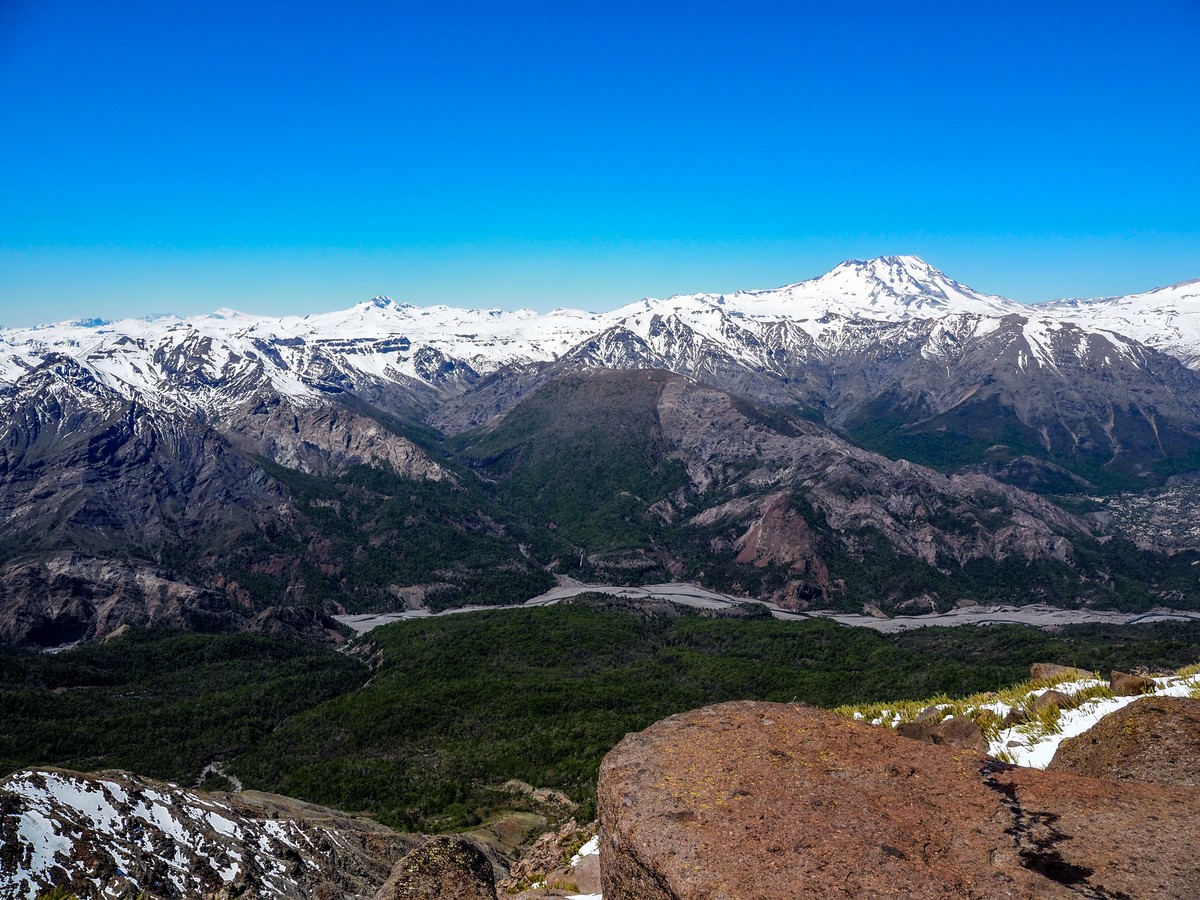
The Enladrillado is a five hour hike to the summit and is a rock formation that locals believe serves as a landing strip for spaceships. Image: author


